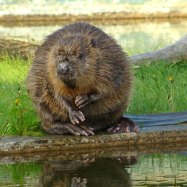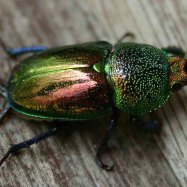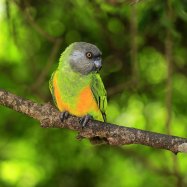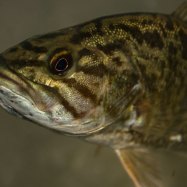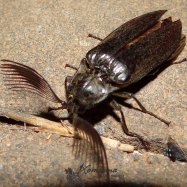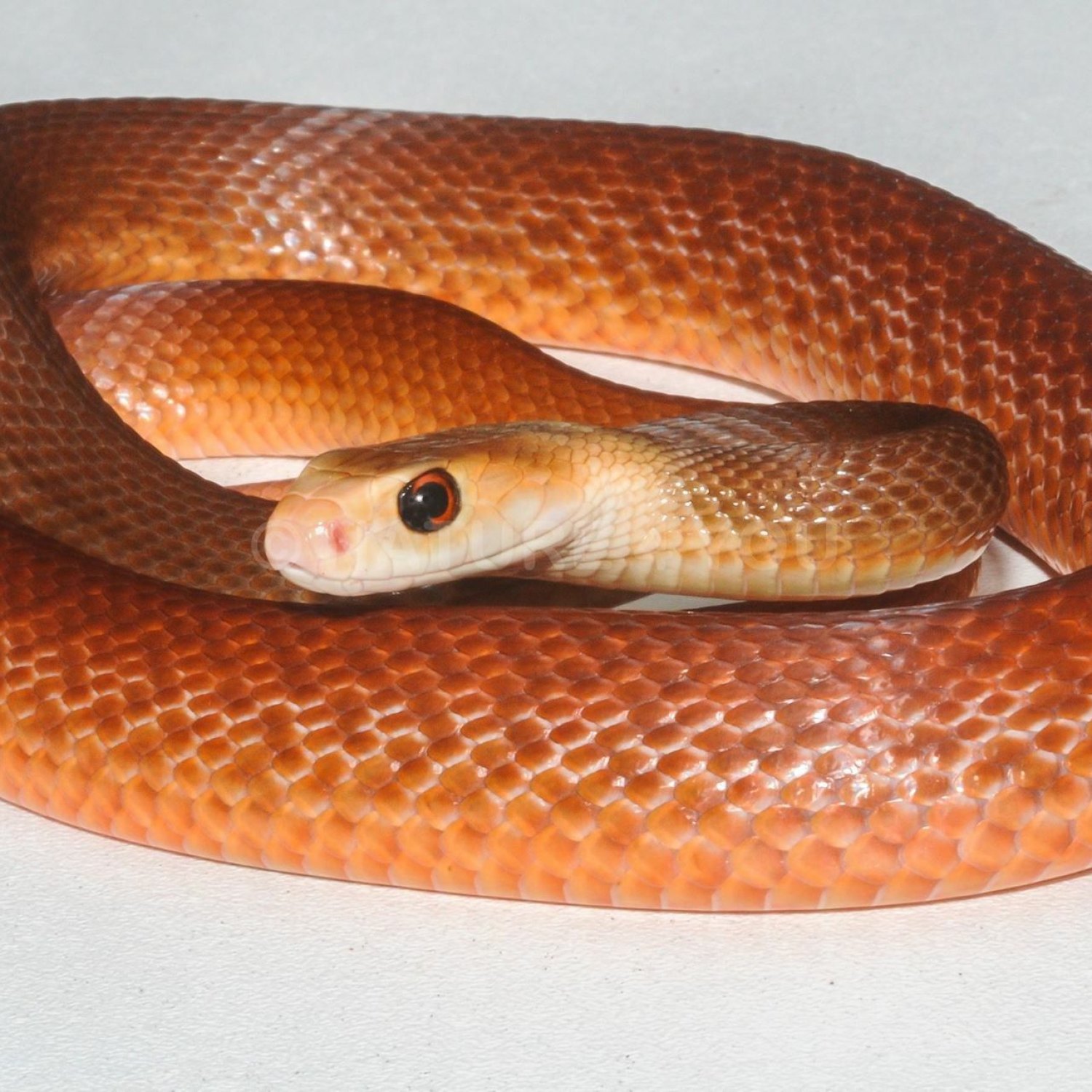
Coastal Taipan
1.8 to 3 meters
The Coastal Taipan, also known as the fierce snake, is one of the longest venomous snakes in Australia. Its sleek and slender body can grow up to 3 meters in length. Found in the northern and eastern regions, this Elapidae family member is highly venomous, making it a feared predator in the land down under. #CoastalTaipan #Australia #VenomousSnake
Animal Details Summary:
Common Name: Coastal Taipan
Kingdom: Animalia
Habitat: Coastal regions, grasslands, forests
The Deadly and Enigmatic Coastal Taipan: A Master Hunter of the Australian Coast
Deep in the coastal regions of northern and eastern Australia lies a creature like no other – the Coastal Taipan. Often hailed as one of the most venomous snakes in the world, this stealthy and elusive reptile is as fascinating as it is lethal. With its scientific name Oxyuranus scutellatus, the Coastal Taipan is a member of the Elapidae family, known for their potent neurotoxic venom. In this article, we will delve into the world of the Coastal Taipan and discover what makes it such a unique and deadly predator Coastal Taipan.The Habitat and Distribution of the Coastal Taipan
The Coastal Taipan is primarily found in the coastal regions of Australia, particularly in grasslands, forests, and swamps. They can also be found in the coastal regions of New Guinea. As their name suggests, they have a strong preference for living near the coast, but they can also be found in inland areas, although they are less common. These areas provide the perfect habitat for the Coastal Taipan, with ample hiding spots and prey to sustain their existence.One interesting fact about the Coastal Taipan is that they are mainly active during the day, with their peak activity time being early morning and late afternoon. This is due to their hunting methods, which we will discuss further in the article.
The Physical Appearance of the Coastal Taipan
The Coastal Taipan has a distinct appearance that sets it apart from other snakes. It has a long, slender and muscular body, with a length ranging from 1.8 to 3 meters Caribbean Reef Shark. They have a prominent head that is slightly broader than their body, giving them a triangular shape. Their eyes are small but highly efficient at detecting movement, making them excellent hunters.The coloration of the Coastal Taipan is another characteristic feature. They have a light to dark brown color on the top of their bodies, with a creamy to yellowish color on their belly. This coloration is known as countershading, which helps them blend into their surroundings and remain undetected by their prey.
The Feeding Habits of the Coastal Taipan
As carnivorous creatures, the Coastal Taipan relies on a diet consisting mainly of rodents, small mammals, and birds. They hunt using a technique known as ambush hunting, which involves staying still and waiting for their prey to come to them. Once an opportunity arises, they strike with immense speed, delivering a lethal bite that contains their potent neurotoxic venom.Their venom is so powerful that it can cause paralysis and respiratory failure in their prey, leading to a quick and easy kill. This method is also essential for their survival, as it minimizes the risk of injury while hunting. Interestingly, the Coastal Taipan is also known for its ability to feed on other venomous snakes, including rattlesnakes and other species of taipans.
The Unique Adaptations of the Coastal Taipan
The Coastal Taipan has some unique adaptations that make it a formidable hunter and survivor. One of these adaptations is its highly efficient metabolism, which allows them to digest their meals quickly. This means they are constantly on the hunt for their next meal, keeping their energy levels high and ensuring their survival.Another noteworthy adaptation is their acute sense of smell, which allows them to detect their prey from a considerable distance. They also have highly advanced visual and thermal sensing capabilities, giving them a 360-degree view of their surroundings. These adaptations, along with their stealth and speed, make them one of the most efficient predators in the animal kingdom.
The Potential Danger Posed by the Coastal Taipan
Without a doubt, the Coastal Taipan is a highly dangerous animal that should be respected and avoided. Their venom is so potent that it can kill a human within 45 minutes if left untreated. However, despite their reputation as a deadly predator, their encounters with humans are relatively rare. This is due to their elusive nature and preference for living in remote areas.In the event of a bite, prompt medical attention is crucial to prevent severe complications. It is essential to remember that these creatures are not inherently aggressive and will only bite in self-defense. It is always best to admire these animals from a distance and allow them to continue thriving in their natural habitat.
The Conservation Status of the Coastal Taipan
The Coastal Taipan is currently listed as Least Concern on the IUCN Red List, meaning that their population is believed to be stable. This is mainly due to their wide distribution and preference for living in remote areas. However, habitat destruction and human persecution remain a significant threat to their existence.To ensure the continued survival of this magnificent creature, it is essential to respect their habitats and avoid any unnecessary contact. The Coastal Taipan plays a vital role in the ecosystem as a top predator, and their loss could have significant consequences for the balance of nature.
The Enigmatic Nature of the Coastal Taipan
Despite being heavily studied and researched, the Coastal Taipan remains an enigmatic creature, with many aspects of its behavior and life still a mystery. Scientists continue to learn more about this elusive animal, continually discovering new and fascinating information.One ongoing study is looking into the potential medicinal properties of the venom of the Coastal Taipan. While being highly toxic, the venom also contains compounds that have shown promise in treating certain types of blood pressure and some neurological disorders. This research could lead to the development of new and effective treatments for various diseases.
The Majesty of Nature's Creations
The Coastal Taipan is undoubtedly a remarkable creature, and a testament to the diversity and beauty of nature. From its unique adaptations to its crucial role in the ecosystem, this animal is a fascinating subject of study and admiration. While it may have a deadly reputation, we must remember to appreciate and respect these creatures, for without them, our world would be a far less incredible place.

Coastal Taipan
Animal Details Coastal Taipan - Scientific Name: Oxyuranus scutellatus
- Category: Animals C
- Scientific Name: Oxyuranus scutellatus
- Common Name: Coastal Taipan
- Kingdom: Animalia
- Phylum: Chordata
- Class: Reptilia
- Order: Squamata
- Family: Elapidae
- Habitat: Coastal regions, grasslands, forests
- Feeding Method: Carnivorous
- Geographical Distribution: Australia, New Guinea
- Country of Origin: Australia
- Location: Northern and eastern regions of Australia
- Animal Coloration: Light to dark brown on the top, creamy to yellowish on the belly
- Body Shape: Sleek and slender
- Length: 1.8 to 3 meters
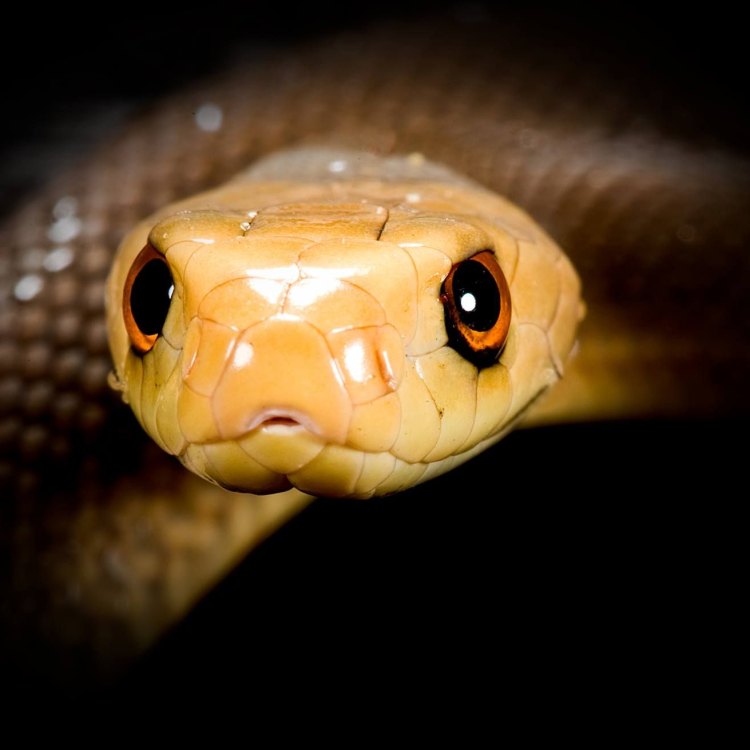
Coastal Taipan
- Adult Size: Large
- Average Lifespan: Around 10 years in the wild
- Reproduction: Oviparous
- Reproductive Behavior: Mating occurs in the spring, females lay eggs in clutches
- Sound or Call: High-pitched hissing sound when threatened
- Migration Pattern: Non-migratory
- Social Groups: Solitary
- Behavior: Aggressive when disturbed, but generally shy and avoids human contact
- Threats: Habitat loss, snake persecution by humans
- Conservation Status: Least Concern
- Impact on Ecosystem: Plays an important role in controlling rodent populations
- Human Use: None
- Distinctive Features: Long and slender body, large scales on the head, powerful venom
- Interesting Facts: Coastal Taipans are highly venomous and considered to be one of the most dangerous snake species in the world
- Predator: Humans, large birds of prey
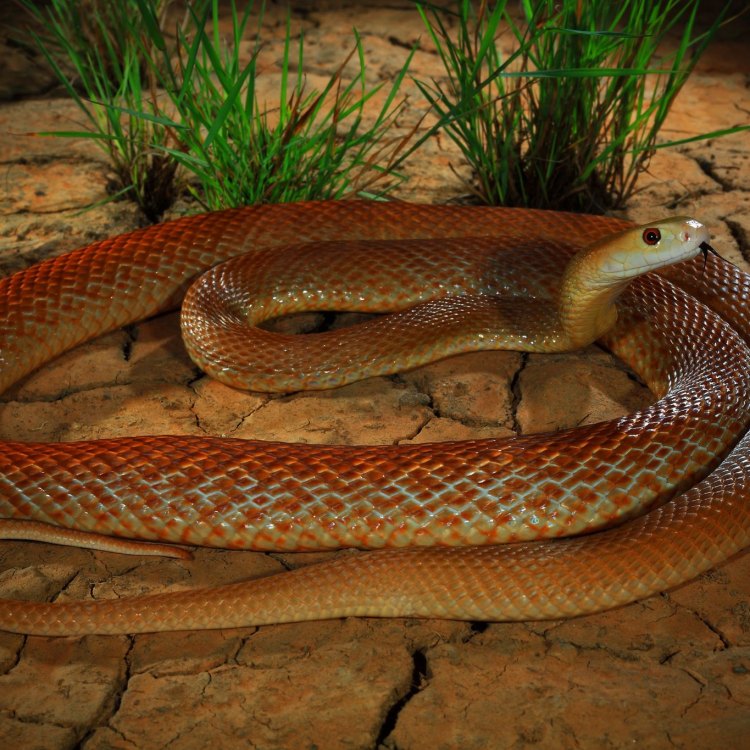
Oxyuranus scutellatus
The Dangerous Beauty of the Coastal Taipan
The coastal taipan, also known as the fierce snake, is a highly venomous and dangerous snake species found in the coastal regions of northern and eastern Australia. Despite their reputation as one of the deadliest snakes in the world, the coastal taipan's unique characteristics and behaviors make them a fascinating and intriguing species to study.Size and Lifespan
The coastal taipan is a large snake, with adults reaching an average length of 6.6 feet and weighing up to 15 pounds PeaceOfAnimals.Com. They have a sleek and slender body, making them agile and swift hunters in their natural habitat. Although their size may seem intimidating, they are no match for humans and prefer to avoid any confrontation.
In the wild, coastal taipans have an average lifespan of around 10 years. However, this can vary depending on their habitat and availability of prey. In captivity, they have been known to live up to 20 years, but their lifespan is significantly reduced due to stress and inadequate living conditions.
Reproduction and Behavior
Coastal taipans are oviparous, meaning they lay eggs to reproduce. Mating occurs during the spring season, and females will lay eggs in clutches of 12-16. The eggs will hatch after approximately three months, and the baby snakes will have to fend for themselves from the moment they are born.
As solitary creatures, coastal taipans do not form social groups and are rarely seen in pairs Coachwhip Snake. They prefer to spend their time alone, hunting for prey and avoiding any potential threats. When disturbed, they can become aggressive and will deliver a powerful strike, but they are generally shy and try to avoid any contact with humans.
Distinctive Features and Sound
One of the most distinctive features of the coastal taipan is their long and slender body. Their diet primarily consists of rats and other rodents, and their sleek bodies allow them to maneuver quickly through grass and dense vegetation to catch their prey.
They also have large scales on their heads, which give them a unique appearance and help protect them from potential injuries. But what makes the coastal taipan truly stand out is their powerful venom. Their venom is a potent neurotoxin and can cause rapid paralysis and death in their prey.
When threatened, coastal taipans will emit a high-pitched hissing sound, warning their potential predators to stay away. This sound is also used to communicate with other coastal taipans, particularly during the mating season.
Conservation and Threats
The coastal taipan is listed as "Least Concern" on the IUCN Red List, meaning their population is stable and not facing any immediate threats of extinction. However, they are still facing several challenges, mostly due to human activities.
Habitat loss is one of the main threats to the coastal taipan. As humans continue to develop and expand into their natural habitat, these snakes are losing their homes and food sources. They are also heavily persecuted by humans due to their venomous nature, leading to unnecessary killings and further reduction of their population.
Impacts on the Ecosystem
Despite their venomous reputation, the coastal taipan plays a crucial role in its ecosystem. Like most snakes, they help control rodent populations, which can have a detrimental effect on the environment if left unchecked. Rodents can spread diseases and cause damage to crops, making the coastal taipan a valuable asset in keeping their numbers in check.
Humans and Coastal Taipans
Humans and coastal taipans have a complicated relationship. While these snakes are feared and often killed by humans, they do not pose a significant threat unless provoked. In most cases, coastal taipan bites occur when someone accidentally steps on or disturbs the snake, and they retaliate to protect themselves.
However, it is crucial to remember that they are a crucial part of the ecosystem and have a right to exist in their natural habitat. Instead of fearing and persecuting them, we should learn to coexist with them and appreciate their place in the environment.
Interesting Facts and Predators
The coastal taipan is a truly fascinating species, and here are a few more interesting facts about them:
- They are highly venomous and considered to be one of the most dangerous snake species in the world. Just 110 milligrams of their venom can kill a human.
- They are fast slitherers, capable of moving at speeds of up to 13 feet per second.
- The coastal taipan is the most venomous land snake in Australia, but they are not the most dangerous snake in the country. That title goes to the inland taipan, which has a more potent venom.
- Unlike other snakes, the coastal taipan does not have a fixed mating season. They will breed whenever environmental conditions are suitable.
Unfortunately, like many other species, the coastal taipan also has predators. Large birds of prey, such as eagles and hawks, are their main predators, but humans also contribute to their declining population.
Conclusion
In conclusion, the coastal taipan is a unique and fascinating snake species that deserves our respect and protection. Despite their venomous and dangerous reputation, these snakes play a crucial role in their ecosystem and have a right to exist in their natural habitat.
As humans, it is our responsibility to learn to coexist with these creatures and not view them as a threat. We should work towards preserving and protecting their habitats, instead of destroying them. By doing so, we can ensure the continued existence of the coastal taipan and maintain the delicate balance of the environment.
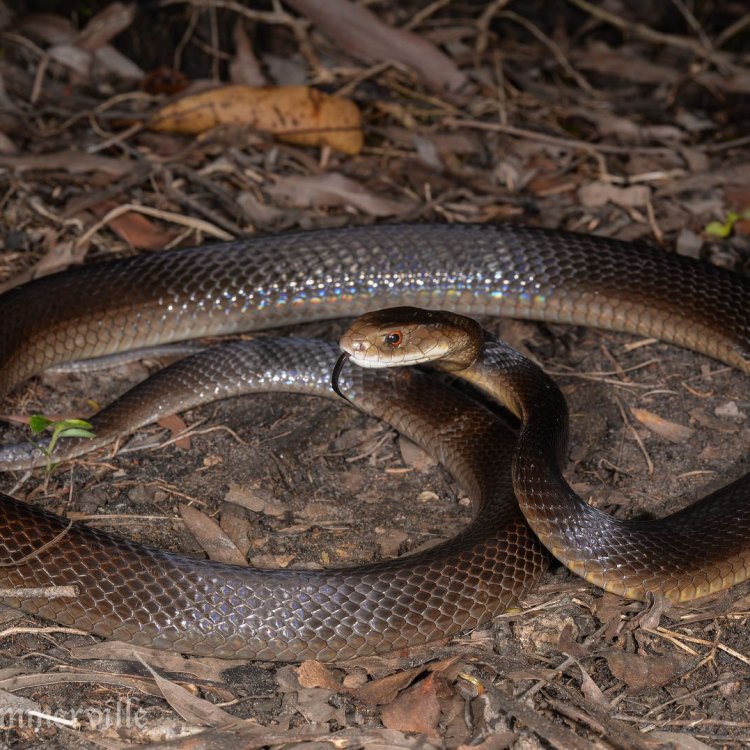
The Deadly and Enigmatic Coastal Taipan: A Master Hunter of the Australian Coast
Disclaimer: The content provided is for informational purposes only. We cannot guarantee the accuracy of the information on this page 100%. All information provided here may change without prior notice.


